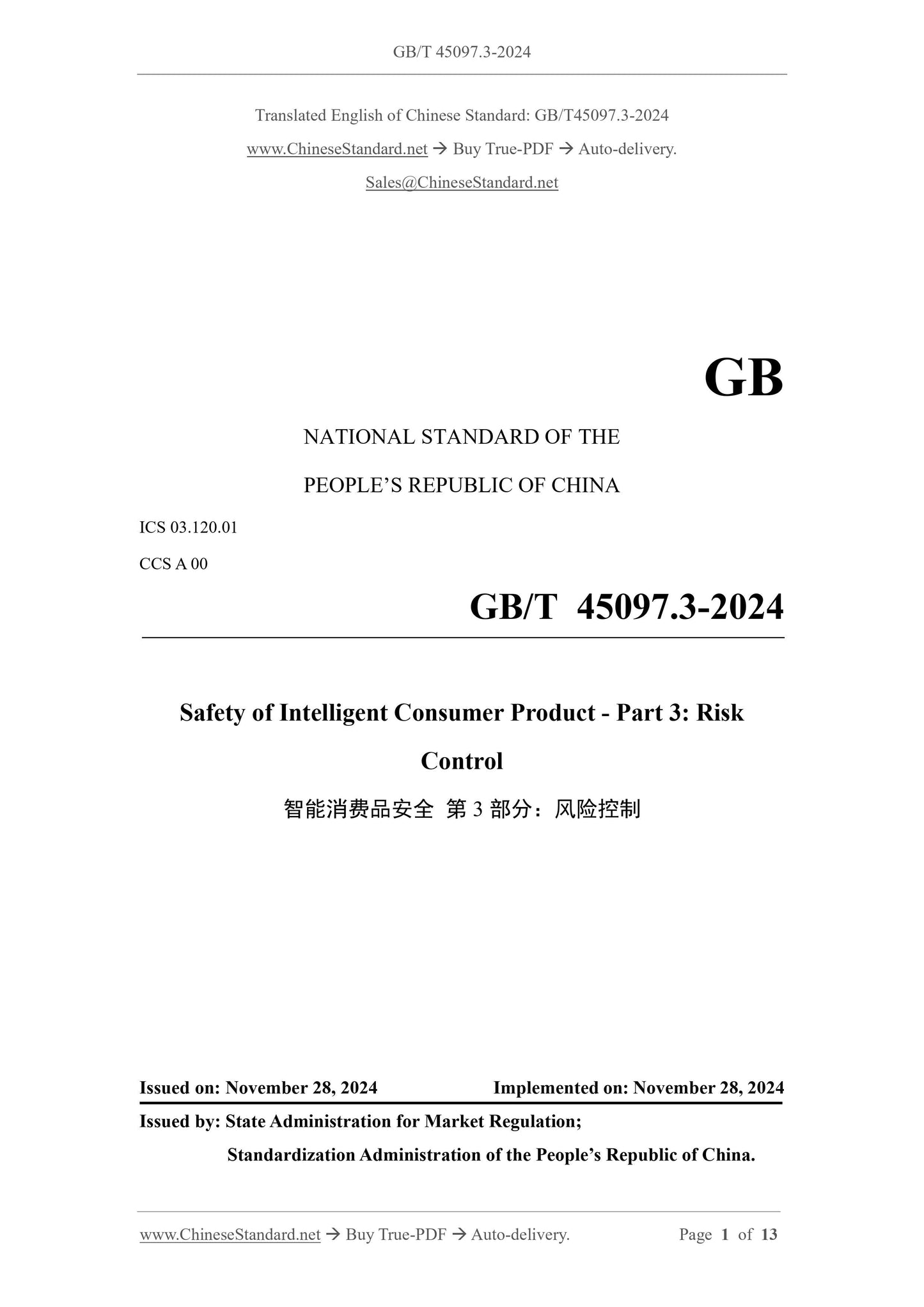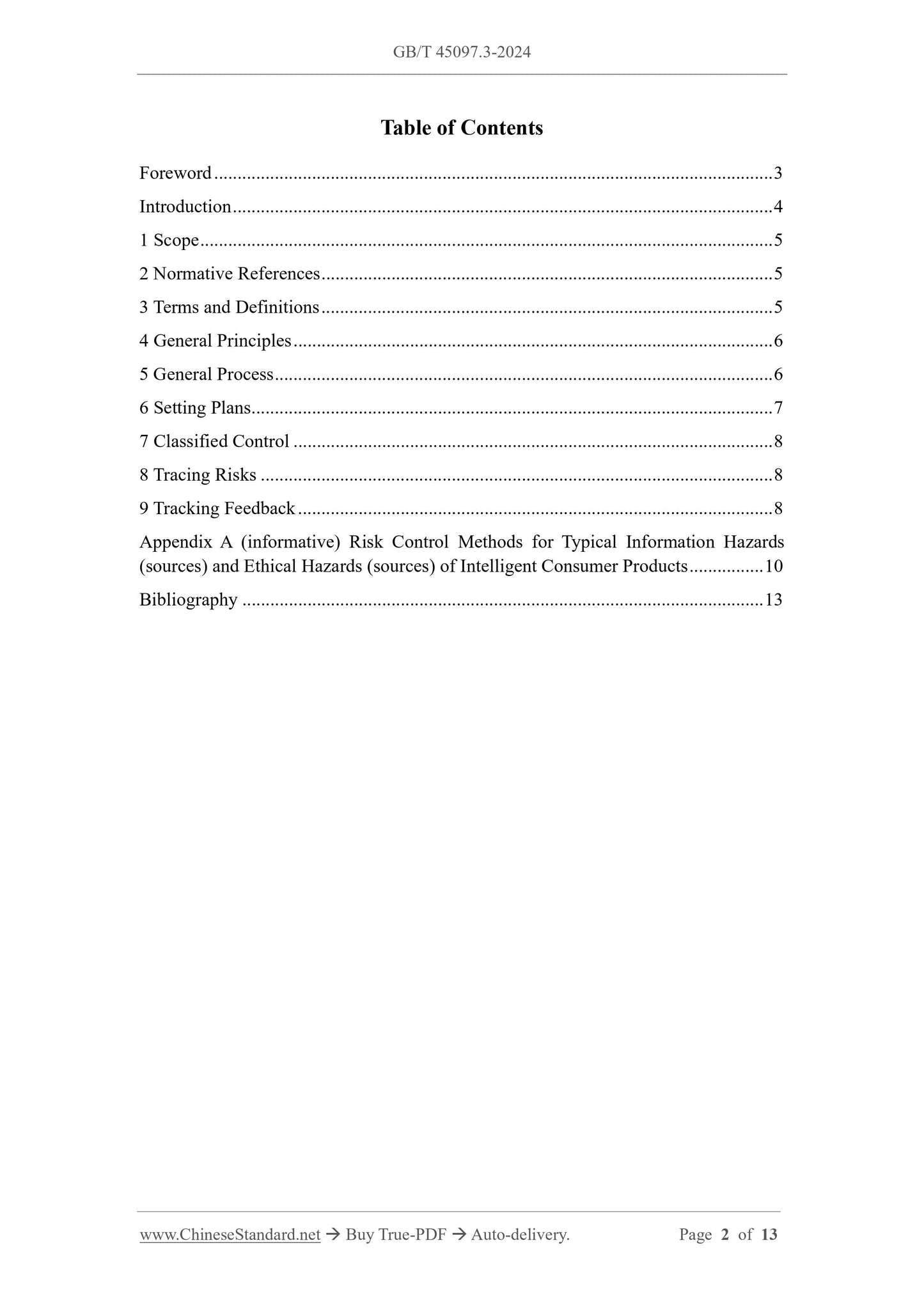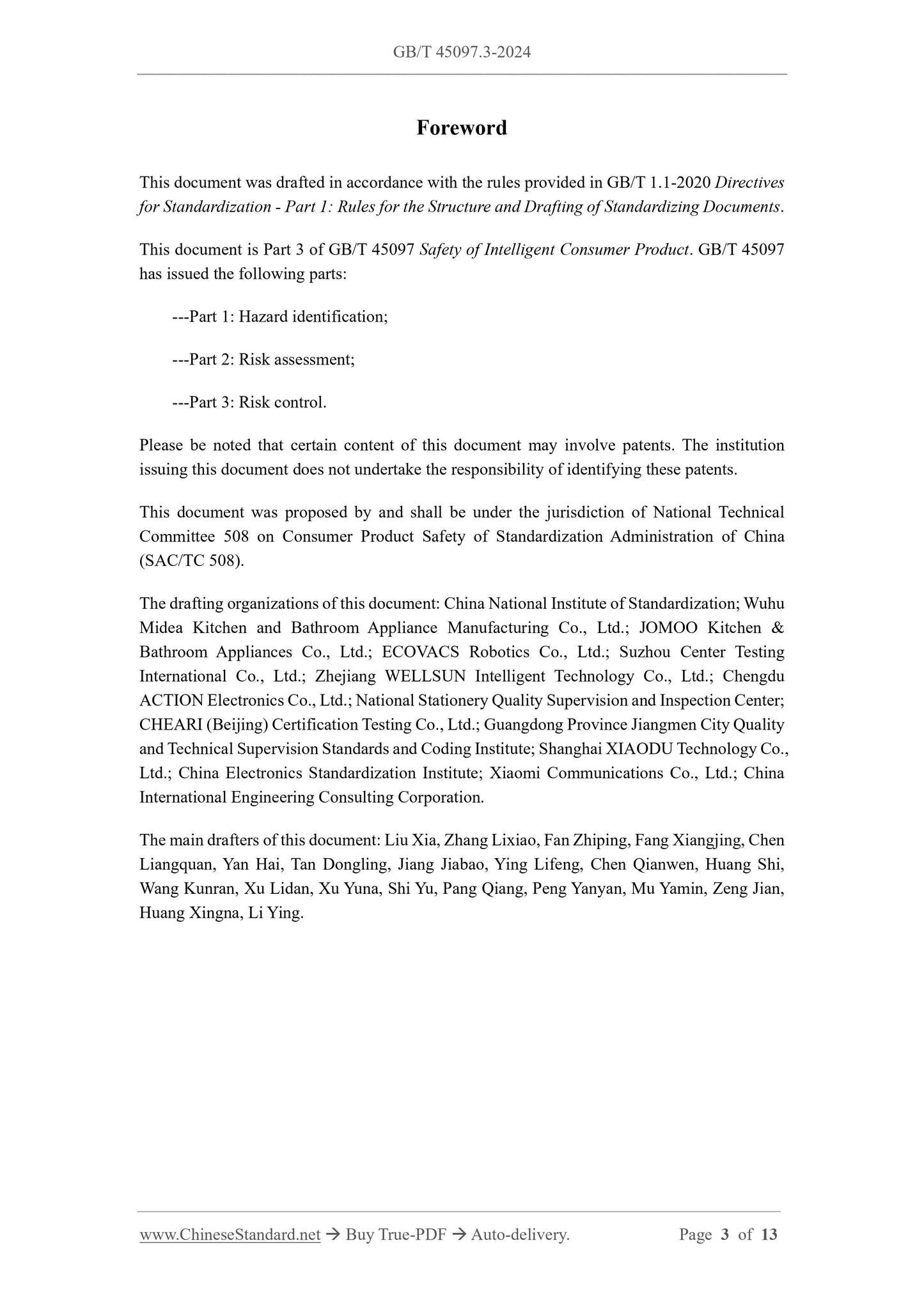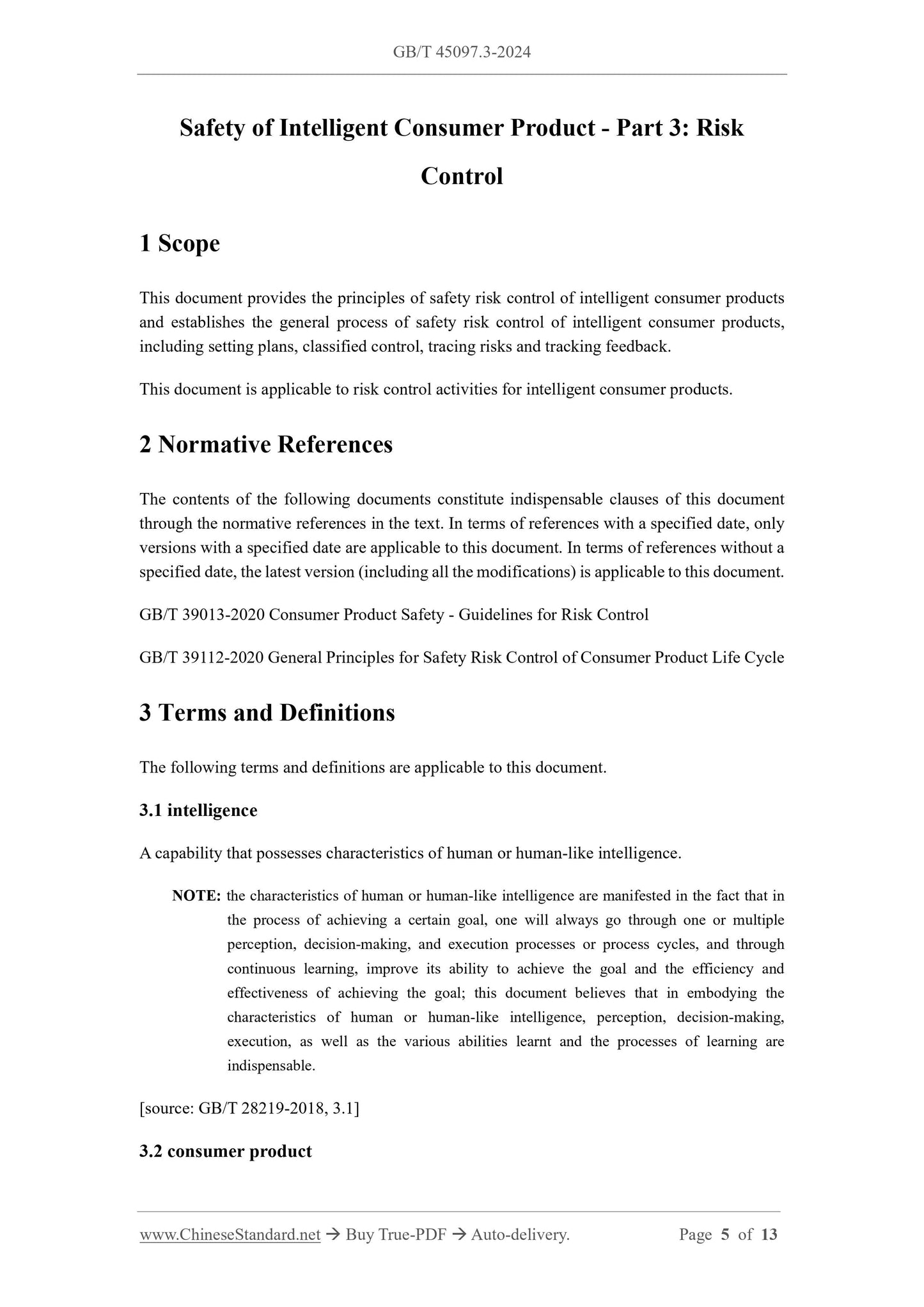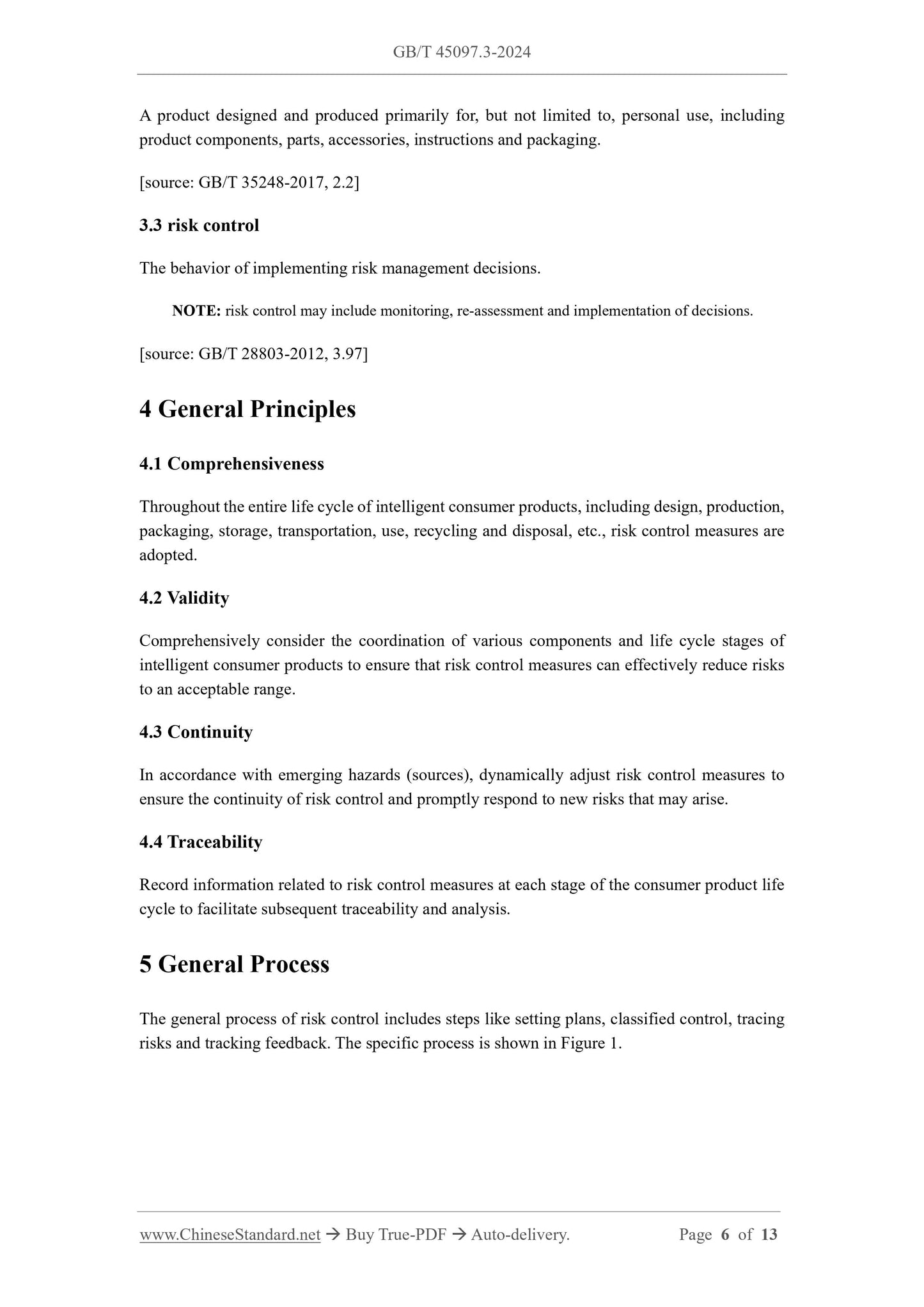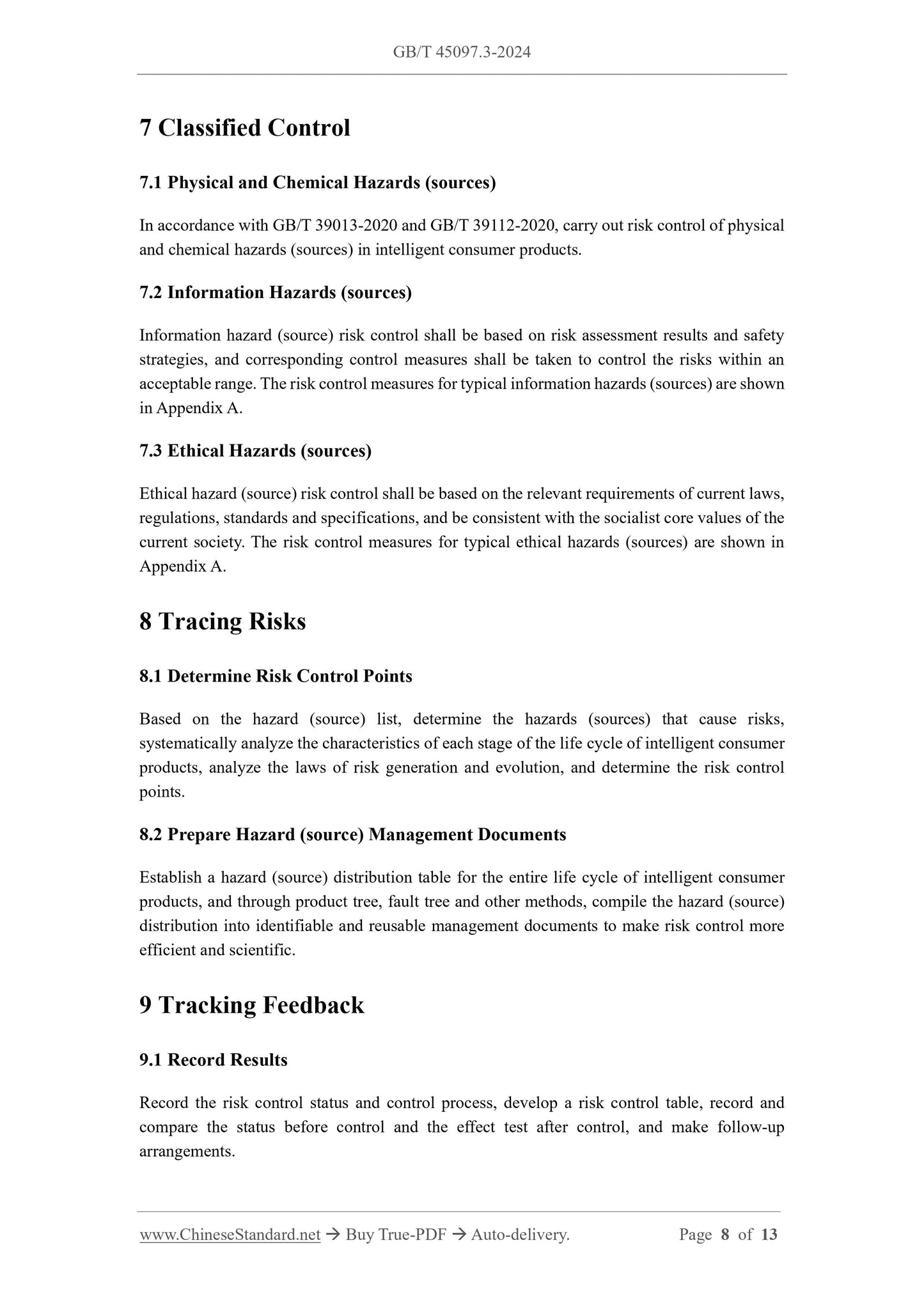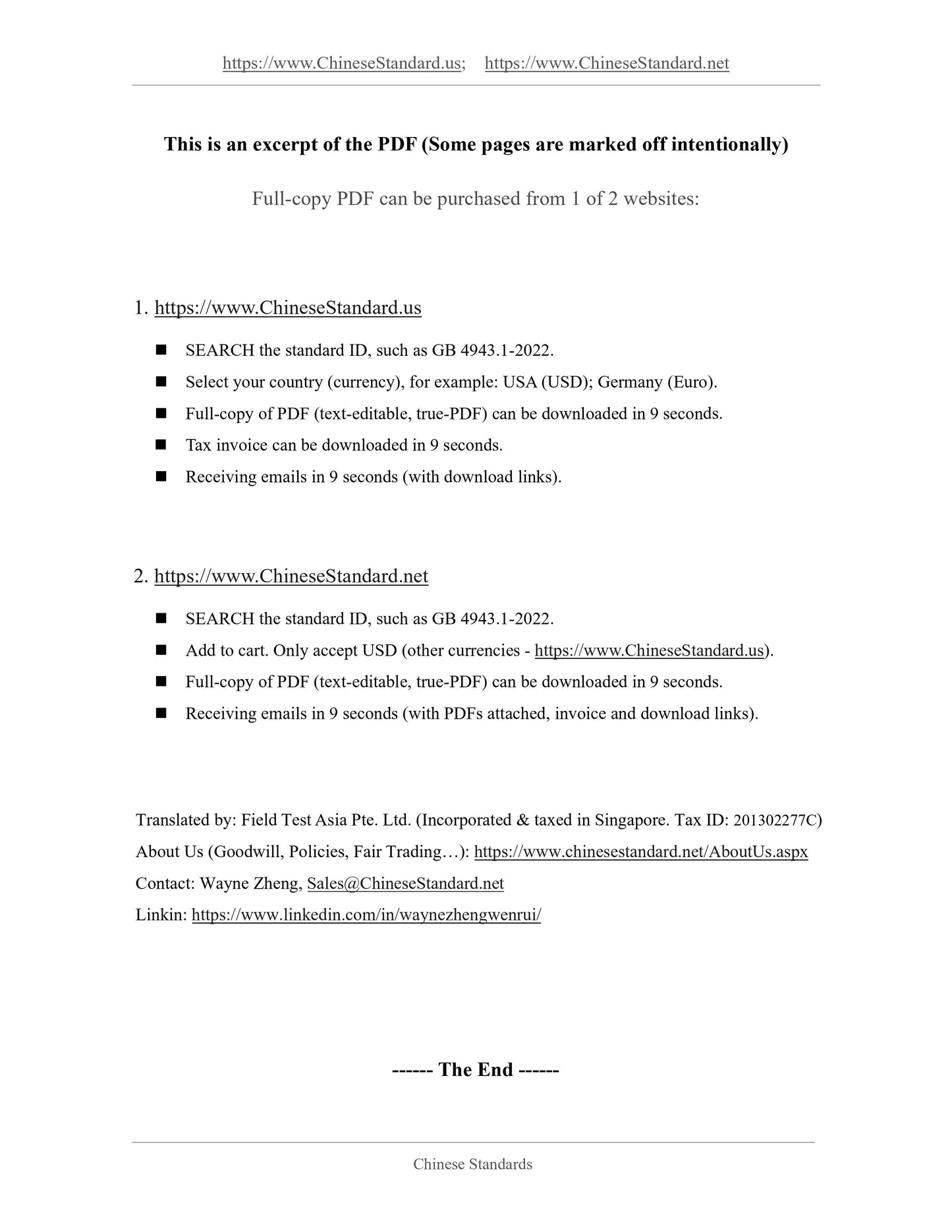1
/
of
7
www.ChineseStandard.us -- Field Test Asia Pte. Ltd.
GB/T 45097.3-2024 English PDF (GB/T45097.3-2024)
GB/T 45097.3-2024 English PDF (GB/T45097.3-2024)
Regular price
$200.00
Regular price
Sale price
$200.00
Unit price
/
per
Shipping calculated at checkout.
Couldn't load pickup availability
GB/T 45097.3-2024: Safety of intelligent consumer product - Part 3: Risk control
Delivery: 9 seconds. Download (and Email) true-PDF + Invoice.Get Quotation: Click GB/T 45097.3-2024 (Self-service in 1-minute)
Newer / historical versions: GB/T 45097.3-2024
Preview True-PDF
Scope
This document provides the principles of safety risk control of intelligent consumer productsand establishes the general process of safety risk control of intelligent consumer products,
including setting plans, classified control, tracing risks and tracking feedback.
This document is applicable to risk control activities for intelligent consumer products.
Basic Data
| Standard ID | GB/T 45097.3-2024 (GB/T45097.3-2024) |
| Description (Translated English) | Safety of intelligent consumer product - Part 3: Risk control |
| Sector / Industry | National Standard (Recommended) |
| Classification of Chinese Standard | A00 |
| Classification of International Standard | 03.120.01 |
| Word Count Estimation | 14,182 |
| Date of Issue | 2024-11-28 |
| Date of Implementation | 2024-11-28 |
| Issuing agency(ies) | State Administration for Market Regulation, China National Standardization Administration |
Share
